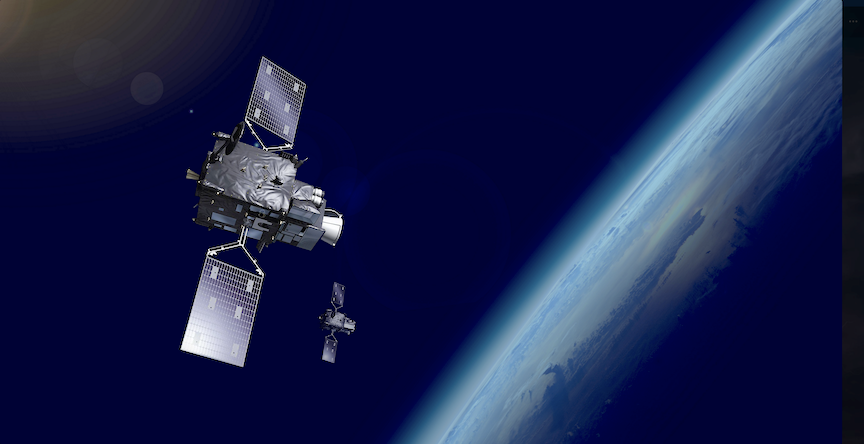
The first satellite instrument continuously detecting lightning over Europe and Africaison is delivering a breakthrough for the detection and prediction of severe storms.
Europe’s meteorological satellite agency, EUMETSAT, and the European Space Agency (ESA), today released animations from the Lightning Imager on Meteosat Third Generation – Imager 1 (MTG-I1), which was launched on December 13, 2022. The stunning first image from the satellite’s other main Earth observation instrument, the Flexible Combined Imager, was released in May.
The Lightning Imager, built by Leonardo, continuously detects the light pulses produced by cloud-to-ground, cloud-to-cloud and intracloud lightning flashes.

The instrument has four cameras covering Europe, Africa, the Middle East and parts of South America. The cameras will continuously observe lightning activity from space and EUMETSAT will disseminate the data to weather services in its member states and beyond. Crucially, EUMETSAT will deliver the data to weather services in Africa and other regions, where lightning detection capability with ground-based observations is limited.
Each animation is a sequence of images created by collecting one minute’s worth of lightning measurements, overlaid on a single image of the Earth from the Lightning Imager.

“Severe storms are often preceded by abrupt changes in lightning activity,” EUMETSAT Director-General Phil Evans said. “By observing these changes in activity, Lightning Imager data will give weather forecasters additional confidence in their forecasts of severe storms.
“When these data are used in conjunction with the high-resolution data from the Flexible Combined Imager, weather forecasters will be better able to track the development of severe storms and have a longer lead-in time to warn authorities and communities.”
Director of Earth Observation at ESA, Simonetta Cheli, said the animations from the Lightning Imager data showed the remarkable capabilities of the instrument.
“The animations show the instrument’s ability to accurately and effectively detect lightning activity over the whole area of the cameras’ field of view, which covers 84 percent of the Earth disc,” Cheli said.
“ESA and EUMETSAT, together with European industrial partners, are ensuring the benefits of highly innovative new technology are felt by communities and sectors of the economy in Europe and beyond.”
Leonardo Project Engineering Manager for the Lightning Imager, Guia Pastorini, said, “The Lightning Imager has four cameras and each one can capture 1,000 images per second, day and night, detecting even a single lightning bolt faster than the blink of an eye.
“Thanks to specific algorithms, data is processed on board to send only useful information to Earth, supporting the development of more accurate weather forecasts, as well as contributing to the study of weather phenomena and air transport safety.
“Together with ESA and EUMETSAT, and coordinating an international industrial team, Leonardo has been working on this outstanding technology for 10 years, and today we are very proud to present the images of the first European lightning hunter, the only in the world with these unique performances.”
MTG-I1 is operated by EUMETSAT from its headquarters in Darmstadt, Germany. The satellite was procured by ESA, fulfilling the requirements established by EUMETSAT in consultation with the meteorological services in its member states. Thales Alenia Space, MTG prime contractor, built the imaging instrument, the Flexible Combined Imager, and integrated the MTG-I1 satellite, for which OHB supplied the platform. The Lightning Imager was developed by Leonardo.
The data used for these animations were acquired at a lower sensitivity setting of the instrument than will be provided to meteorological services for weather forecasting purposes. MTG-I1 is currently undergoing its commissioning phase during which the instruments are calibrated and the data validated.
The data from the Lightning Imager will become available for operational use early in 2024.
